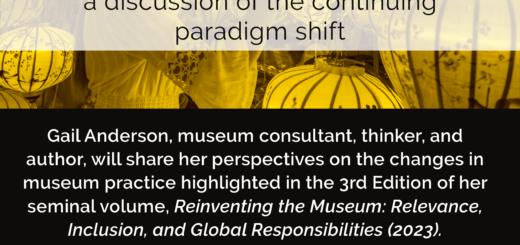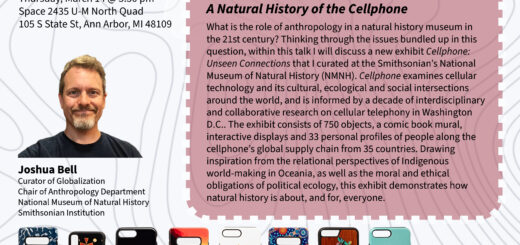On September 9, 2003 Charles Sawyer generously accepted an invitation to offer his Reflections on the U-M Museum Practice Program, 1959-1980.
When I came to Michigan in 1957 as Director of the U-M Museum of Art, I recognized the opportunity and the need for a program which would introduce students in the history of art and related disciplines to museum collections and to the various activities sponsored by the museums in the area.
In this effort, I was influenced by my experience in Professor Paul Sachs’ Museum Course at Harvard in the early 1930’s which trained a generation of directors of art museums throughout the country. Reflecting, thirty years later, I felt that the particular value of this course was introducing us to the exceptionally rich collections of Harvard and the Boston Museum of Fine Arts and encouraging us to study in some depth individual works of art in the collections. Also, quite subjectively, the course was an introduction to Paul Sachs’ many friends among museum directors and trustees, art dealers, and collectors which proved invaluable to many of in us in later years.
I was also influenced by my previous year as a student in the Harvard Law School and the case method developed there, a Socratic experience, or in simpler terms “learning by doing.” I believed that a museum course should provide the student with an introduction to all phases of museum activity through actual experience in the planning, organization, and arrangement of a class exhibition with the guidance and support of members of the faculty and the museum staff. This was to become a primary focus of the Museum Program at Michigan, with increasing sophistication, for the next thirty years.
During the initial years, 1959-1962, the U-M program had modest beginnings. The first seminars were comprised of four to eight graduate students in History of Art and met three or four times a week. It had the enthusiastic support of Otto Wittman, the director of the Toledo Museum , who was also a graduate of the Harvard program. Three of the four initial students went on to internships at Toledo and subsequently the Michigan-Toledo axis continued to be a major focus of the program. Millard Rogers, who was a member of the initial class, had come from Michigan State for graduate study in the history of art, and in completing requirements for the master’s degree had a year’s internship at the Toledo Museum and subsequently worked with John Pope Hennesey at the National Gallery in London. He then became Assistant Director at Toledo, supervising the continuing flow of interns, and then became Director of the Elvejehm Museum at the University of Wisconsin and subsequently Director at the Cincinnati Museum.
Trips to neighboring museums were a feature of the program over many years. These included the Detroit Institute of Art, the Henry Ford Museum, Cranbrook, and the Flint Museum, and also visits to private collections in the Detroit area. We were indebted to the unfailing generosity of our colleagues in devoting their Saturday mornings to the class.
Unlike the Harvard program, which was devoted primarily to the training of museum directors, the U-M program was conceived in a somewhat broader frame of reference to include museum curators, registrars, educators, and librarians. As the program expanded, we encouraged the participation of students from other disciplines-American and other area studies and also from the Art School. We encouraged the participation of smaller museums and over the years Cranbrook, Flint, Kalamazoo, and Grand Rapids all had interns.
In 1963, the Henry Ford Museum indicated they would provide funding for up to three museum interns, and in subsequent years about 20 graduate students were enrolled in their program. This became the foundation for the Museum Practice Program as it was officially recognized by the Graduate School. With additional support from the National Endowments for the Arts and Humanities, the course enrollment and the number of museum internships grew substantially in sding years. By 1973, there were 11 students in museum internships and about 25 students in the graduate program. We also had an introductory seminar for undergraduates in which about 20 were enrolled and which I continued to teach for about two years after my retirement as Museum Director. These students accompanied the graduate students on their field trips and some went on to graduate study and museum careers.
Inevitably, circumstances changed over the years, and with the proliferation of museum studies programs and the contraction of potential museum positions and funding for the support of students the number of students enrolled diminished materially. During the 1980s, the number of students enrolled was limited to about six to eight and the focus was clearly on those dedicated to a museum career. In retrospect, I welcomed a broader participation in our museum seminars, for I felt it was also of importance to encourage graduate and undergraduate students from a variety of disciplines to participate in museum work as part of the foundation for their future careers.
Charles Sawyer sadly passed away on February 25, 2005, at the age of 98.


